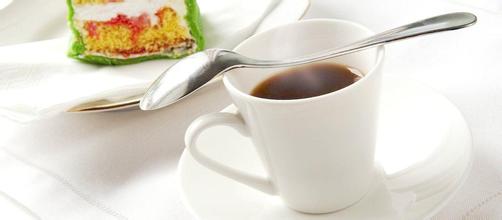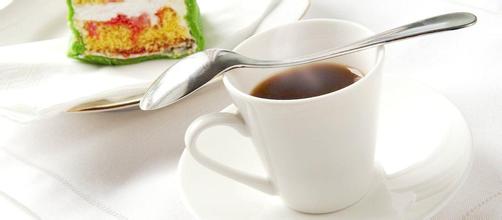Introduction to Cuban Crystal Coffee Practice Western Ruwensori Mountains
First, fill the water-hook the filter element and fill the pot with hot water until marked with the "two cups" icon. Put the filter element into the pot, hold the end of the chain with your hand, and gently hook it to the end of the glass tube. Be careful not to release the hook suddenly, so as not to damage the glass tube of the pot.
Second, ignite-insert the pot diagonally-wait for a big bubble to light the alcohol lamp, insert the upper pot diagonally, and let the rubber edge against the spout of the next pot (rest assured that the upper pot will not fall) so that the chain is soaked in the water of the next pot. Then boil the water and wait for the pot to produce continuous bubbles. Just put the upper pot diagonally, don't let it clog the next pot, small bubbles don't count, wait for big bubbles to appear.
Third, upright-insert into the upper pot when large bubbles appear in the lower pot, straighten the upper pot, shake it left and right and press it down slightly, so that it is gently stuffed into the lower pot. After the upper pot is plugged in, you can see that the water in the next pot begins to climb up. If you have a bean grinder, you can start grinding beans now! Two cups of water use a medium grinding scale of three spoonfuls of coffee (about 24g)
4. Let the water in the next pot rise completely to the top pot. After the water has completely risen to the top pot, don't worry, wait a few seconds, and then prepare to pour in the coffee powder after the bubble rises to the top pot less.
Fifth, pour in the coffee powder-stir (left and right) into the ground coffee powder, move it around with a stirring bamboo spoon, and evenly put the coffee powder into the water. The timing starts at the same time as the first stirring. Stir gently to avoid violent stirring. If it is fresh coffee powder, it will float on the surface to form a layer of powder. At this time, the coffee powder needs to be stirred so that the flavor of the coffee can be completely extracted. The correct stirring action is to move the bamboo spoon in the left and right direction, with a "strong way" of downward pressure, to "press" the coffee powder floating on the surface of the water below the surface.
6. Stir twice more-after turning off the first stir, time 30 seconds, make the second stir, and then time 20 seconds for the final stirring-- then remove the alcohol lamp. Take the pre-prepared (wrung-dry) slightly wet dishcloth and gently wrap the side of the lower pot from the side to prevent the wet cloth from touching the place where the alcohol flame at the bottom of the pot comes into contact, so as to prevent the pot from breaking. At this time, you can see that the water in the upper pot is quickly "pulled" to the lower pot. If your coffee is fresh enough, there will be a lot of light brown foam in the pot.
7. After the coffee is sucked into the lower pot, hold the upper pot in one hand and the handle of the lower pot in the other, gently shake the upper pot to the left and right to pull out the upper pot and the lower pot. Pour the coffee into a warm coffee cup and enjoy the mellow coffee that you have prepared by hand.

Important Notice :
前街咖啡 FrontStreet Coffee has moved to new addredd:
FrontStreet Coffee Address: 315,Donghua East Road,GuangZhou
Tel:020 38364473
- Prev

Cuban crystal coffee with slightly sour taste introduces boutique coffee
In 1748, coffee was introduced into Cuba from Domiga, and Cuba began to grow coffee ever since. With fertile land, humid climate and abundant Rain Water, Cuba can be called a natural treasure land for coffee cultivation. The suitable natural conditions provide a favorable natural environment for the growth of coffee trees, and coffee is well planted and developed here. In Cuba, the cultivation of coffee is regulated by the state. Cuba is the best
- Next

Introduction to the flavor of Burundian coffee bean manor mainly producing bourbon
Country of production: Burundian Grade: AA,FWS planting area: Buyendi Brand: Buyendi treatment: wet treatment appearance: 1dCompact 300grgrje 16-18SCR Variety: Jackson bourbon Note: due to ethnic secession, the chaos of Burundian coffee has been going on for a long time, with a large number of raw beans mixed with the old and new, making this coffee unsuitable for grading.
Related
- Does Rose Summer choose Blue, Green or Red? Detailed explanation of Rose Summer Coffee plots and Classification in Panamanian Jade Manor
- What is the difference between the origin, producing area, processing plant, cooperative and manor of coffee beans?
- How fine does the espresso powder fit? how to grind the espresso?
- Sca coffee roasting degree color card coffee roasting degree 8 roasting color values what do you mean?
- The practice of lattes: how to make lattes at home
- Introduction to Indonesian Fine Coffee beans-- Java Coffee producing area of Indonesian Arabica Coffee
- How much will the flavor of light and medium roasted rose summer be expressed? What baking level is rose summer suitable for?
- Introduction to the characteristics of washing, sun-drying or wet-planing coffee commonly used in Mantenin, Indonesia
- Price characteristics of Arabica Coffee Bean Starbucks introduction to Manning Coffee Bean Taste producing area Variety Manor
- What is the authentic Yega flavor? What are the flavor characteristics of the really excellent Yejasuffi coffee beans?

